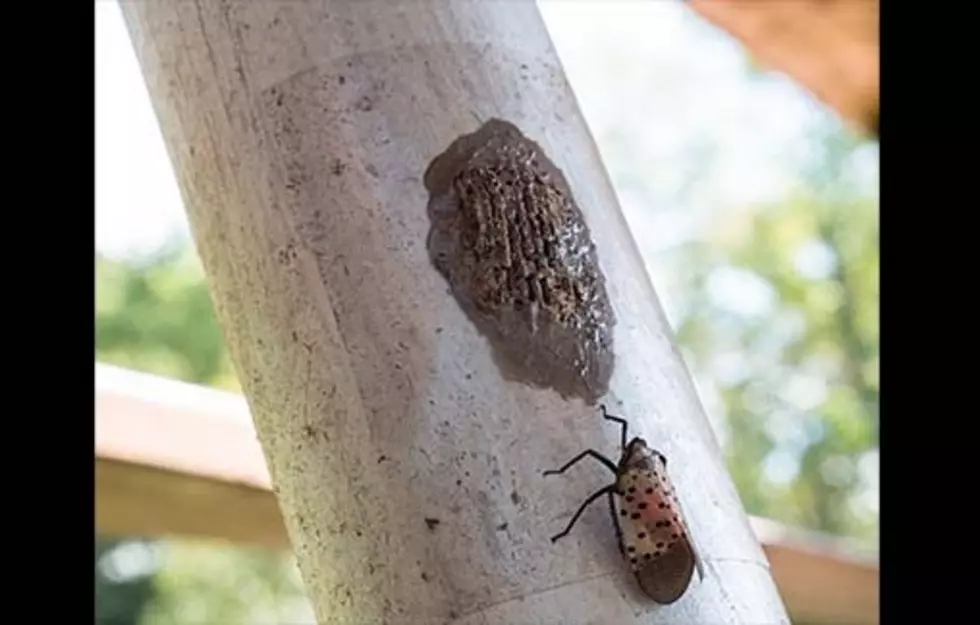
USDA Warns States to Kill Invading Insect Mounds on Sight – Are Texas and Louisiana at Risk?
Texas and Louisiana are no strangers to invasive plant, animal, and insect species.
Some of the most recognizable invasive insect species include the Formosan Subterranean Termite, which damages wooden structures, and the Red Imported Fire Ant, known for painful stings. The Asian Tiger Mosquito carries diseases like Zika virus and breeds in small water sources. The Emerald Ash Borer attacks and kills ash trees, and the Asian Citrus Psyllid spreads citrus greening disease, harming citrus crops.

These invasive insects pose threats to ecosystems, agriculture, and human health, leading to efforts to control their populations.
But the US Department of Agriculture has begun warning several states of a major crisis that could be looming if another invasive species continues to grow.
Spotted Lanternfly and the Spongy Moth
While it may look beautiful, the spotted lanternfly is such a devastating invasive species that the USDA is warning folks to destroy any egg mounds they see. The same goes for the spongy moth.
"Look for spotted lanternfly and spongy moth egg masses on vehicles, trees, and other outdoor surfaces during the winter and early spring," the federal agency warned. "The spotted lanternfly and spongy moth are economically and environmentally destructive invasive insects. Together, they attack or defoliate hundreds of tree and plant species."
"Both the spotted lanternfly and the spongy moth are able hitchhikers in their egg mass life stage," the warning noted. "They can attach to and travel unnoticed on trucks, cars, trains, planes, and items people leave outdoors and then move to other locales. The spotted lanternfly is currently found in 17 states, the spongy moth has been detected in 20. It’s important to keep these pests from hitchhiking to new states."
What can you do to help?
• Smash and scrape spongy moth and spotted lanternfly egg masses during late fall, winter, and early spring, when these pests are dormant in their egg mass life stage. Invasive pest egg masses can travel long distances on the items people travel with and can start infestations in new parts of the country.
• If you live in a quarantine area for either pest, your state department of agriculture will have guidance posted specific to your area.
• If you are passing through or leaving a spotted lanternfly or spongy moth quarantine area, check your vehicle, and your belongings for all life stages of these pests.
• If you are moving outdoor furniture or a recreational vehicle and camping equipment, check for flat, mud-like spotted lanternfly egg masses. Spongy moth egg masses are fuzzy, spongy, and cream or brown-colored. If you find these pests in quarantine areas, smash them, and scrape them off, so that you don’t accidentally move them to new places.
• Don’t move untreated firewood to new places. It can easily introduce invasive pests that kill or defoliate forests. Source firewood where you will burn it or buy certified, heat-treated firewood before you travel.
• If you live in an area where these pests are not established and see a spotted lanternfly, spongy moth, or any of their life stages, please report the sighting to your state’s department of agriculture.
Currently, neither insect is invading Texas or Louisiana. However, the spotted lanternfly is close, having been identified in some southern states like Tennessee.
Invasive pests have few or no natural predators, the USDA says, so their populations quickly outpace native species and spread. These non-native plant pests and diseases disrupt our ecosystems, attack our crops, and can reduce biological diversity. Across the country, these species collectively cause upwards of $40 billion in damage.
The Top 9 States Louisiana ISN'T Moving To
Gallery Credit: Joe Cunningham
More From News Talk 96.5 KPEL









